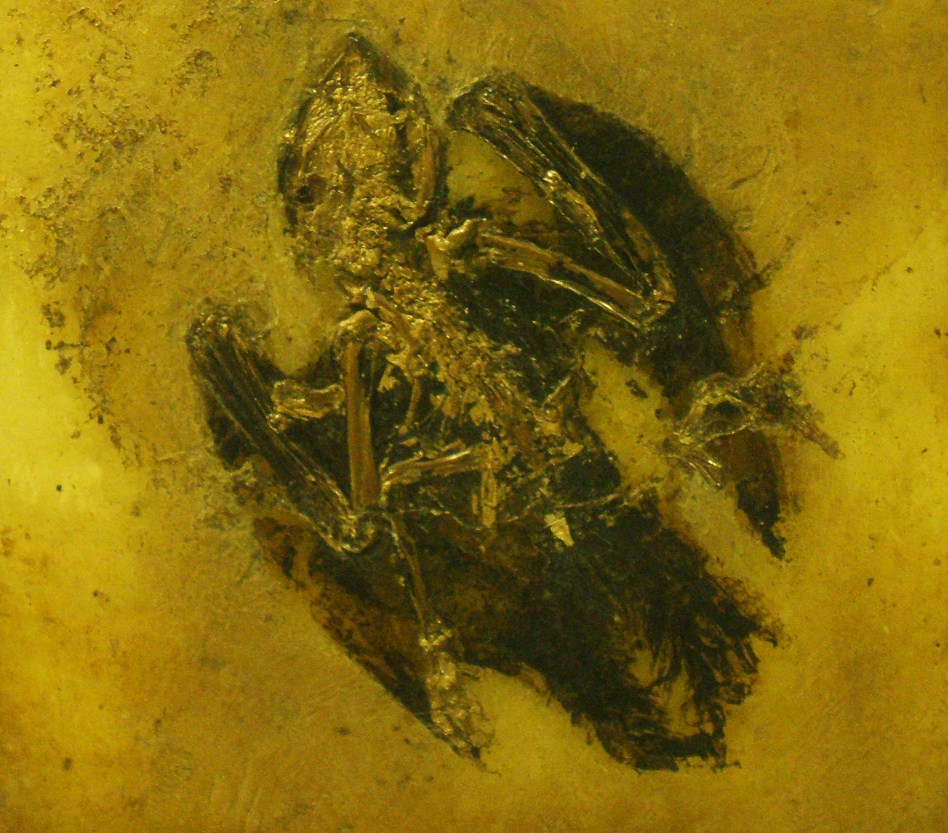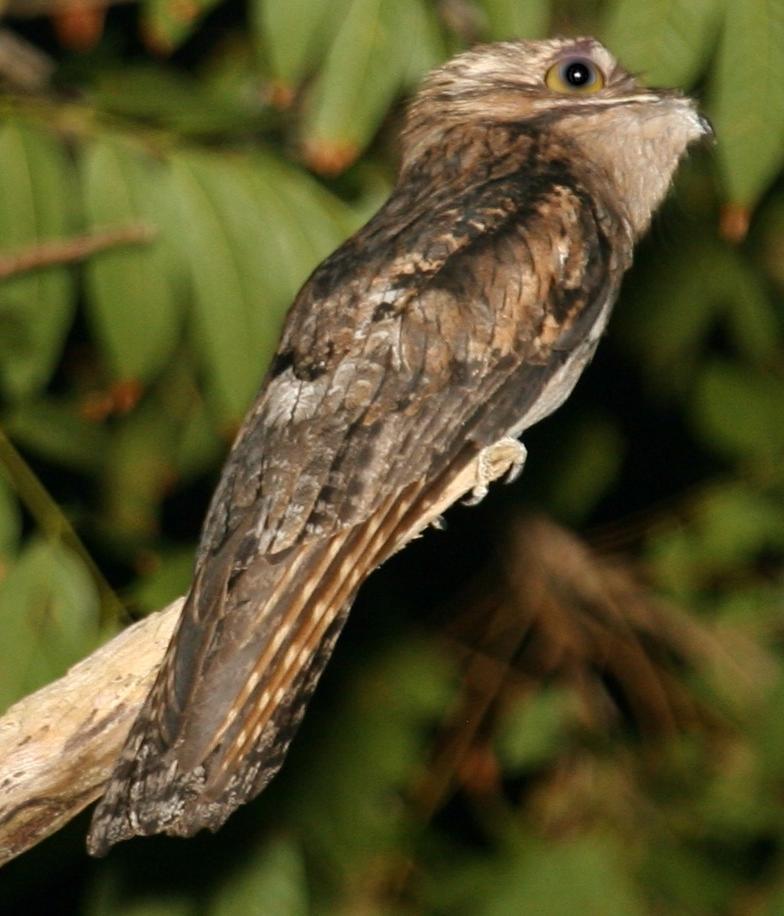Paraprefica on:
[Wikipedia]
[Google]
[Amazon]
''Paraprefica'' is an extinct genus of
 Described for the first time in 1999 by G. Mayr, this bird was at first placed in the genus '' Prefica'', a North American fossil closely related to modern oilbirds (''
Described for the first time in 1999 by G. Mayr, this bird was at first placed in the genus '' Prefica'', a North American fossil closely related to modern oilbirds (''
 The existing finds from Germany present a puzzle on the birds' distribution, as modern potoos are found only in the New World, from
The existing finds from Germany present a puzzle on the birds' distribution, as modern potoos are found only in the New World, from
The Link: Uncovering Our Earliest Ancestor
'. Hachette. {{Taxonbar, from=Q3895272 Eocene birds of Europe Prehistoric bird genera Nyctibiidae Fossil taxa described in 2005
potoo
Potoos (family Nyctibiidae) are a group of birds related to the nightjars and frogmouths. They are sometimes called poor-me-ones, after their haunting calls. The family Nyctibiidae was formerly included with the nightjars in the order Caprimul ...
(family Nyctibiidae) from the middle Eocene
The Eocene ( ) Epoch is a geological epoch that lasted from about 56 to 33.9 million years ago (mya). It is the second epoch of the Paleogene Period in the modern Cenozoic Era. The name ''Eocene'' comes from the Ancient Greek (''ēṓs'', " ...
(c. 48 million years ago). Its fossil remains have been found in the Messel pit
The Messel pit (german: Grube Messel) is a disused quarry near the village of Messel (Landkreis Darmstadt-Dieburg, Hesse) about southeast of Frankfurt am Main, Germany. Bituminous shale was mined there. Because of its abundance of well-preserve ...
at Messel
Messel is a municipality in the district of Darmstadt-Dieburg in Hesse near Frankfurt am Main in Germany.
The village is first mentioned, as ''Masilla'', in the Lorsch codex.
Messel was the property of the lords of Groschlag from ca. 1400 to 1799 ...
, Germany
Germany, officially the Federal Republic of Germany (FRG),, is a country in Central Europe. It is the most populous member state of the European Union. Germany lies between the Baltic and North Sea to the north and the Alps to the sou ...
.
Taxonomy
It is the only known member of the extinct subfamily Parapreficinae, erected in 2021 to distinguish ''Paraprefica'' from the extant potoos of the genus ''Nyctibius Bird genera
''Nyctibius'' is a genus of potoos, nocturnal birds in the family Nyctibiidae.
Etymology
The genus ''Nyctibius'' was introduced in 1816 by the French ornithologist Louis Jean Pierre Vieillot to accommodate a single species, ...
'' and '' Phyllaemulor'', which have a slightly different anatomy and are known only from the Americas. Described for the first time in 1999 by G. Mayr, this bird was at first placed in the genus '' Prefica'', a North American fossil closely related to modern oilbirds (''
Described for the first time in 1999 by G. Mayr, this bird was at first placed in the genus '' Prefica'', a North American fossil closely related to modern oilbirds (''Steatornis caripensis
The oilbird (''Steatornis caripensis''), locally known as the , is a bird species found in the northern areas of South America including the Caribbean island of Trinidad. It is the only species in the genus ''Steatornis'', the family Steatornith ...
''). Later research showed however that ''Paraprefica'' had characteristics found only in the family Nyctibiidae, order Caprimulgiformes
Nightjars are medium-sized nocturnal or crepuscular birds in the family Caprimulgidae and order Caprimulgiformes, characterised by long wings, short legs, and very short bills. They are sometimes called goatsuckers, due to the ancient folk tal ...
(the nightjars).
It is possible that the similarities between the bones of ''Prefica'' and ''Paraprefica'' are due to primitive characters found in all Cypselomorphs, the group that also includes the Caprimulgiformes. There are two species in the genus: ''Paraprefica kelleri'', the best known, and ''Paraprefica major''.
Description
This bird is known from fossil remains which include askeleton
A skeleton is the structural frame that supports the body of an animal. There are several types of skeletons, including the exoskeleton, which is the stable outer shell of an organism, the endoskeleton, which forms the support structure inside ...
and many well-preserved skull
The skull is a bone protective cavity for the brain. The skull is composed of four types of bone i.e., cranial bones, facial bones, ear ossicles and hyoid bone. However two parts are more prominent: the cranium and the mandible. In humans, t ...
s, and is one of the best preserved Eocene birds. ''Paraprefica'', a medium-sized bird, has skull and legs somewhat resembling today's potoo
Potoos (family Nyctibiidae) are a group of birds related to the nightjars and frogmouths. They are sometimes called poor-me-ones, after their haunting calls. The family Nyctibiidae was formerly included with the nightjars in the order Caprimul ...
s, in the genera ''Nyctibius'' and ''Phyllaemulor''. The head has a thin beak
The beak, bill, or rostrum is an external anatomical structure found mostly in birds, but also in turtles, non-avian dinosaurs and a few mammals. A beak is used for eating, preening, manipulating objects, killing prey, fighting, probing for fo ...
and a very wide mouth, while the wings are relatively large, though smaller than those of extant potoos.Mayr, 1999.Mayr, 2005.
Distribution
 The existing finds from Germany present a puzzle on the birds' distribution, as modern potoos are found only in the New World, from
The existing finds from Germany present a puzzle on the birds' distribution, as modern potoos are found only in the New World, from Mexico
Mexico ( Spanish: México), officially the United Mexican States, is a country in the southern portion of North America. It is bordered to the north by the United States; to the south and west by the Pacific Ocean; to the southeast by Guate ...
to the north of Argentina
Argentina (), officially the Argentine Republic ( es, link=no, República Argentina), is a country in the southern half of South America. Argentina covers an area of , making it the second-largest country in South America after Brazil, t ...
and the Caribbean islands of Jamaica
Jamaica (; ) is an island country situated in the Caribbean Sea. Spanning in area, it is the third-largest island of the Greater Antilles and the Caribbean (after Cuba and Hispaniola). Jamaica lies about south of Cuba, and west of Hispan ...
, Hispaniola
Hispaniola (, also ; es, La Española; Latin and french: Hispaniola; ht, Ispayola; tnq, Ayiti or Quisqueya) is an island in the Caribbean that is part of the Greater Antilles. Hispaniola is the most populous island in the West Indies, and t ...
and Tobago
Tobago () is an island and ward within the Republic of Trinidad and Tobago. It is located northeast of the larger island of Trinidad and about off the northeastern coast of Venezuela. It also lies to the southeast of Grenada. The offici ...
, making them Neotropical
The Neotropical realm is one of the eight biogeographic realms constituting Earth's land surface. Physically, it includes the tropical terrestrial ecoregions of the Americas and the entire South American temperate zone.
Definition
In bi ...
. Either the group was once cosmopolitan, and has become limited to the Americas, or it was Eurasian and has at some time shifted its distribution.Tudge, 2011. p. 84.
References
Sources
* Mayr, G. (1999). ''Caprimulgiform birds from the Middle Eocene of Messel'' (Hessen, Germany). Journal of Vertebrate Paleontology 19(3): 521–532. * Mayr, G. (2005). ''The Palaeogene Old World Potoo ''Paraprefica'' Mayr, 1999 (Aves, Nyctibiidae): its osteology and affinities to the New World Preficinae''. Journal of Systematic Palaeontology. 3 (4): 359–370. doi:10.1017/S1477201905001653 * Tudge, C. (2011).The Link: Uncovering Our Earliest Ancestor
'. Hachette. {{Taxonbar, from=Q3895272 Eocene birds of Europe Prehistoric bird genera Nyctibiidae Fossil taxa described in 2005